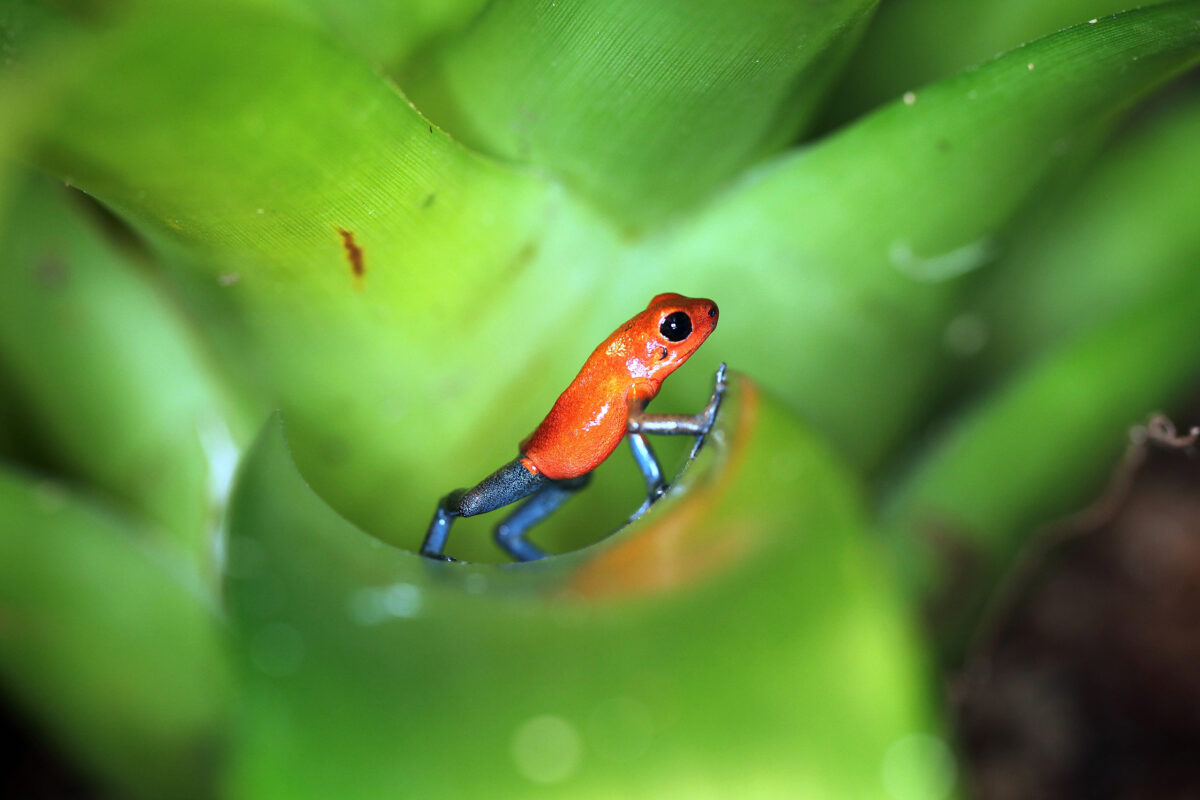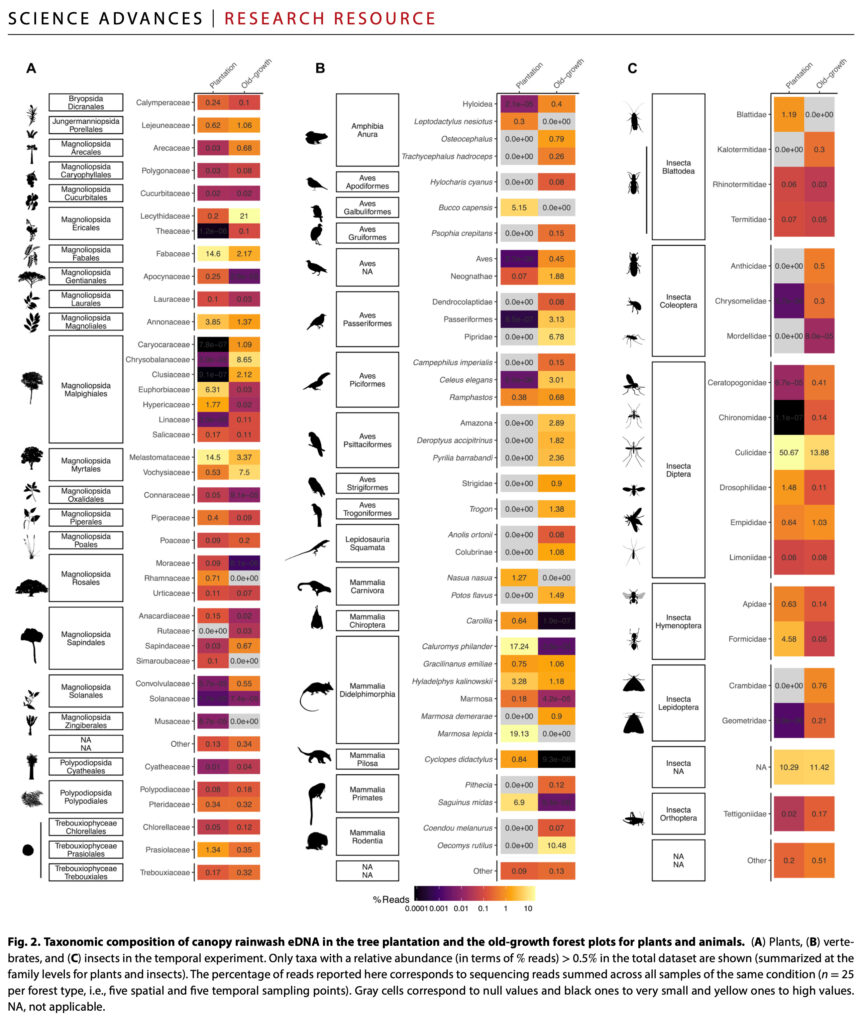How rain can reveal what lives in rainforest treetops

Perched high above the forest floor, the tropical canopy is a reservoir of biodiversity that has long resisted scrutiny. Its inaccessibility has left many of its inhabitants—orchids, epiphytes, ants, monkeys, frogs—poorly studied and poorly protected. But a new study offers a workaround: let the rain do the climbing.
Scientists led by Lucie Zinger at the French National Centre for Scientific Research have shown that water dripping from the canopy carries traces of DNA from the organisms above. By capturing and analyzing this “rainwash” in low-tech collectors, they identified hundreds of species across plants, insects, birds, amphibians, and mammals.
The study, conducted in French Guiana, compared samples from a mature Amazonian forest and a nearby tree plantation. The results were striking. Diversity was markedly higher in the undisturbed forest, where passive collectors accumulated eDNA over a ten-day period. Crucially, the rainwash signal was both local and persistent. Even after heavy rain, biodiversity signatures remained spatially distinct at the scale of tens of meters and stable for up to 40 days.

Unlike airborne or stream-based eDNA, which can drift and muddle geographic origin, rainwash captures a sharp snapshot of the immediate canopy. It can also be deployed at scale with minimal cost. The researchers propose that this method could become a cornerstone of biodiversity monitoring in tropical forests—habitats that are increasingly threatened and chronically under-surveyed.
That is not to say it is a panacea. Detection remains limited to species that shed detectable DNA and to wet seasons where rainfall is sufficient. But in a field stymied by logistical and financial constraints, the ability to “listen” to the canopy through its own runoff is a conceptual advance. In the future, the hum of the rainforest may be traced not through what can be seen and heard, but through what the rain leaves behind.
Lucie Zinger et al. (2025) Elusive tropical forest canopy diversity revealed through environmental DNA contained in rainwater. Science Advances 11, DOI:10.1126/sciadv.adx4909